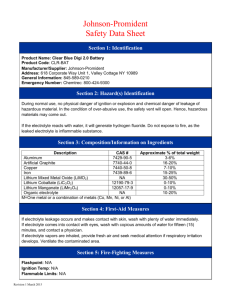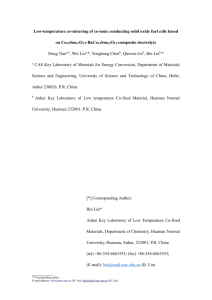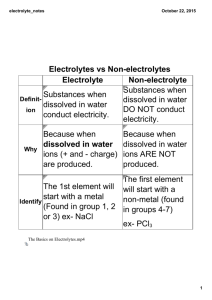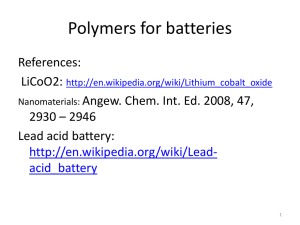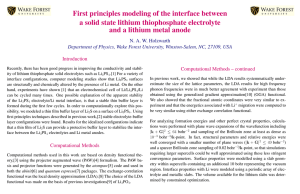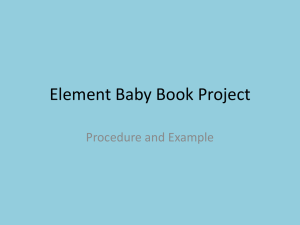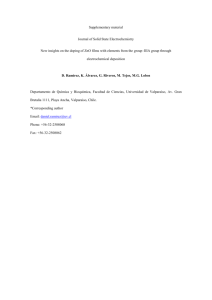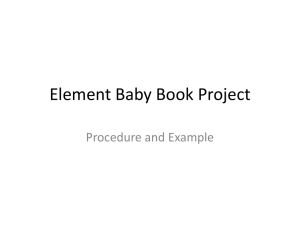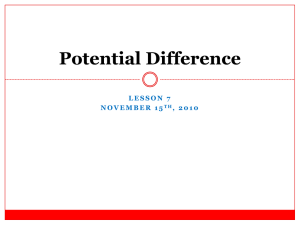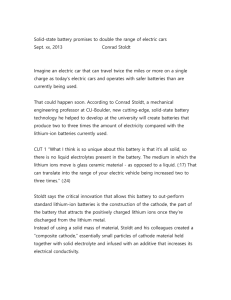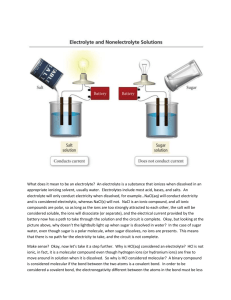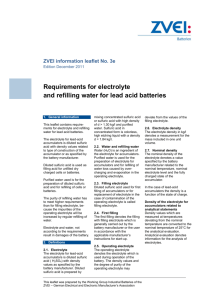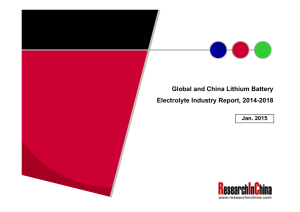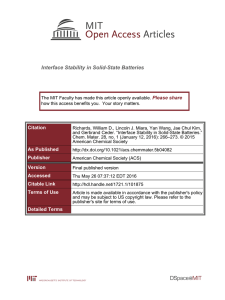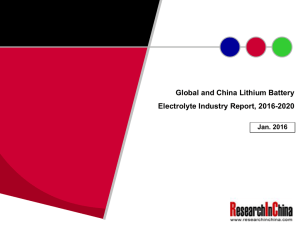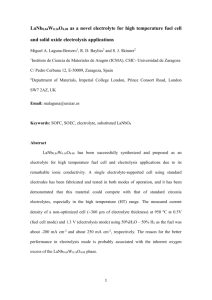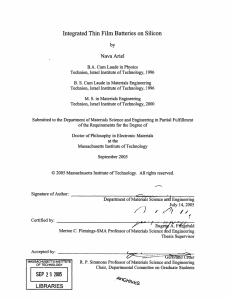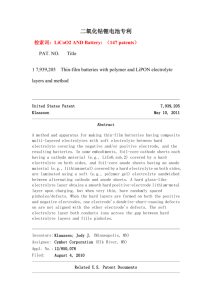Clear-Blue-Battery-SDS-2014
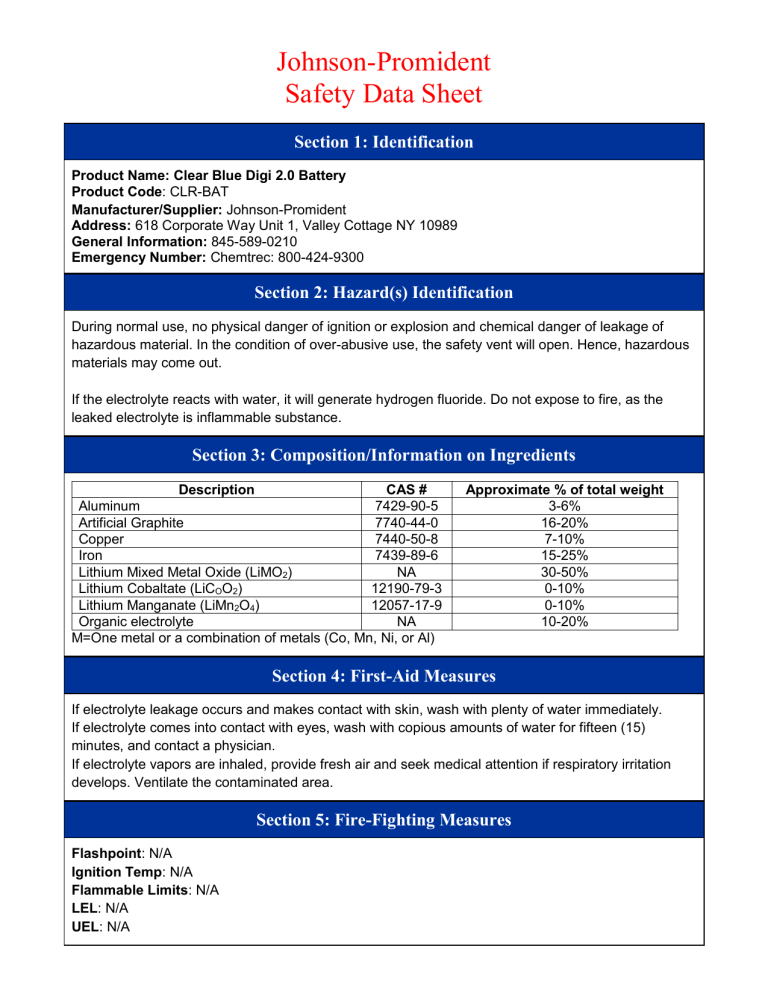
Johnson-Promident
Safety Data Sheet
Section 1: Identification
Product Name: Clear Blue Digi 2.0 Battery
Product Code : CLR-BAT
Manufacturer/Supplier: Johnson-Promident
Address: 618 Corporate Way Unit 1, Valley Cottage NY 10989
General Information: 845-589-0210
Emergency Number: Chemtrec: 800-424-9300
Section 2: Hazard(s) Identification
During normal use, no physical danger of ignition or explosion and chemical danger of leakage of hazardous material. In the condition of over-abusive use, the safety vent will open. Hence, hazardous materials may come out.
If the electrolyte reacts with water, it will generate hydrogen fluoride. Do not expose to fire, as the leaked electrolyte is inflammable substance.
Section 3: Composition/Information on Ingredients
Description
Aluminum
Artificial Graphite
Copper
Iron
CAS #
7429-90-5
7740-44-0
7440-50-8
7439-89-6
Lithium Mixed Metal Oxide (LiMO
2
)
Lithium Cobaltate (LiC
O
O
2
)
Lithium Manganate (LiMn
Organic electrolyte
2
O
4
)
NA
12190-79-3
12057-17-9
NA
M=One metal or a combination of metals (Co, Mn, Ni, or Al)
Approximate % of total weight
3-6%
16-20%
7-10%
15-25%
30-50%
0-10%
0-10%
10-20%
Section 4: First-Aid Measures
If electrolyte leakage occurs and makes contact with skin, wash with plenty of water immediately.
If electrolyte comes into contact with eyes, wash with copious amounts of water for fifteen (15) minutes, and contact a physician.
If electrolyte vapors are inhaled, provide fresh air and seek medical attention if respiratory irritation develops. Ventilate the contaminated area.
Flashpoint : N/A
Ignition Temp : N/A
Flammable Limits : N/A
LEL : N/A
UEL : N/A
Section 5: Fire-Fighting Measures
Extinguishing Media : Carbon dioxide, dry chemical or foam extinguishers can be used for battery
BUT water extinguisher is not suitable.
Special Fire Fighting Procedures : N/A
Unusual Fire and Explosion Hazards : Do not dispose of battery in fire – may explode.
Do not short-circuit battery – may cause burns.
Measures for Fire Extinction – In case of fire, it is permissible to use carbon dioxide, dry chemical or foam extinguishers on these cells or their packing material. Cool exterior of cells if exposed to fire to prevent rupture. Fire fighters should wear self-contained breathing apparatus.
Section 6: Accidental Release Measures
Cells that are leaking should be handled with rubber gloves.
Avoid direct contact with electrolyte.
Wear protective clothing.
Section 7: Handling and Storage
Cells should be handled and stored carefully to avoid short circuits.
Do not store in disorderly fashion, or allow metal objects to be mixed with stored cells.
Never disassemble a battery.
Do not breathe cell vapors or touch internal material with bare hands.
Keep cells between 20°C and 35°C for prolonged storage.
When the cells are close to fully charged, the storage temperature should be between 20°C and 30°C and should be controlled at 1020°C during transportation and packed with efficient air ventilation.
Section 8: Exposure Controls/Personal Protection
Engineering Measures : No engineering measure is necessary during normal use. In case of internal leakage of cell materials, operate the local exhaust or enhance ventilation.
Control Parameters :
Common chemical name
Aluminum
Carbon (Artificial graphite)
Copper
Lithium metal oxide (LiMO
2
Lithium metal oxide (LiMO
2
Lithium metal oxide (LiMO
2
)
)
)
Lithium metal oxide (LiMO
2
)
Organic electrolyte
ACGIH (2002)
TLV-TWA
10 mg/m 3 (metal coarse particulate)
5 mg/m 3 (inflammable powder)
5 mg/m 3 (weld fume)
2 mg/m 3 (inhalant coarse particulate)
0.2 mg/m 3 (fume)
1.0 mg/m 3 (a coarse particulate, mist)
0.02 mg/m 3 (as cobalt)
0.2 mg/m 3 (as manganese)
0.2 mg/m 3 (as nickel)
5 mg/m 3 (as Aluminum)
N/A
ACGIH: American Conference of Governmental Industrial Hygienists, Inc.
TLV-TWA: Threshold Limit Value – Time Weighted Average concentration
BEI: Biological Exposure Indices
Personal Protective Equipment
Respiratory Protection : Respirator with air cylinder, dust mask
BEI
N/A
N/A
N/A
N/A
N/A
N/A
N/A
N/A
Hand Protection : Protective gloves
Eye Protection : Goggle or protective glasses designed to protect against liquid splashes
Skin and Body Protection : Working clothes with long sleeve and long trousers.
Section 9: Physical and Chemical Properties
Boiling Point : N/A
Specific Gravity (H
2
O=1) : N/A
Vapor Pressure (mm Hg) : N/A
Melting Point : N/A
Vapor Density (AIR=1) : N/A
Evaporation Rate (Butyl Acetate) : N/A
Solubility in Water : N/A
Appearance : Cylindrical or prismatic shape
Odor : None
Section 10: Stability and Reactivity
Stability : Stable
Incompatibility (materials to avoid) : N/A
Hazardous Decomposition or Byproducts : N/A
Hazardous Polymerization : Will not occur
Section 11: Toxicological Information
Routes of Entry
Skin: N/A
Inhalation: N/A
Ingestion: N/A
In case of electrolyte leakage, skin will be itchy when contaminated with electrolyte.
Contact with electrolyte can cause severe irritation and chemical burns.
Inhalation of electrolyte vapors may cause irritation of the upper respiratory tract and lungs.
In case of electrolyte vapor or splash, eye contact causes inflammation.
Section 12: Ecological Information* (non-mandatory)
Do not bury or throw out into the environment as a cell as the internal materials remain in the environment.
Section 13: Disposal Considerations* (non-mandatory)
Dispose of cells according to government regulations.
Section 14: Transport Information* (non-mandatory)
Complies with the necessary testing requirements under the UN Manual of Tests and Criteria
ST/SG/AC.10/11/Rev.4, Section 38.3 as referenced in the following transportation regulations:
1. UN Recommendations on the Transport of Dangerous Good Model Regulations
2. U.S. Department of Transportation Hazardous Materials Regulations (HMR)
3. International Civil Aviation Organization (ICAO) Technical Instructions
4. International Air Transport Association (IATA) Dangerous Goods Regulations
5. International Maritime Dangerous Good (IMDG) Code.
Exempted from these regulations since it meets all UN Testing requirements and does not exceed
20Wh (See 49 CFR 173.185 of the U.S. HMR, Guidance on the Transport of Lithium Batteries of
2009-2010 edition of the ICAO Technical Instructions and consequently the 52 nd edition of the DGR and IATA Dangerous Goods Regulations, and Special Provision 188 of the IMDG Code and UN Model
Regulations).
Contains less than 20Wh.
The Watt hour (Wh) calculation:
Under the 2009-2010 edition of the ICAO Technical Instructions and consequently the 52 nd edition of the DGR, the unit Wh is equal to rated capacity (Ah) x nominal voltage (V).
Cells should be packaged in accordance with these transportation regulations (the cells comply with
IATA Packing Instruction 965 Section II). It is especially important to ensure that cells are packed in such a way to prevent short circuits.
Non-dangerous goods.
The commodity meets the UN manual of Tests and Criteria, Part III, Sub-section 38.3.
Section 15: Regulatory Information* (non-mandatory)
Special requirements according to local regulatories.
Section 16: Other Information
The data in this Safety Data Sheet relates only to the specific material designated herein.
